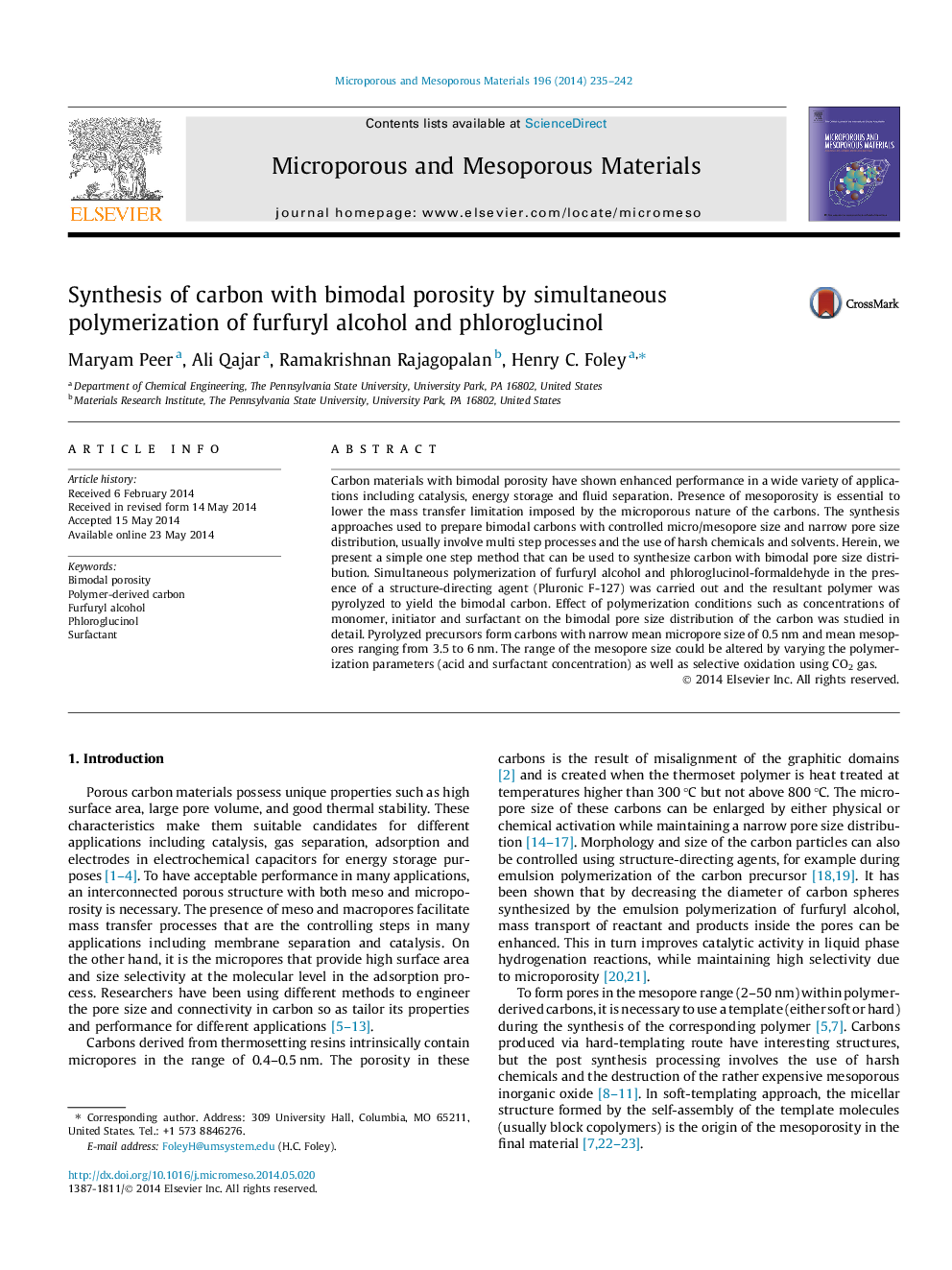| Article ID | Journal | Published Year | Pages | File Type |
|---|---|---|---|---|
| 73009 | Microporous and Mesoporous Materials | 2014 | 8 Pages |
•Furfuryl alcohol and phloroglucinol were simultaneously polymerized to prepare bimodal carbon.•Varying the surfactant and acid concentration, shifted the mesopore size.•Monomer composition needs to fall within a specific range, in order to obtain bimodal porosity.•CO2 oxidation of the carbon shifts both micro and mesopore size and increases the BET surface area.
Carbon materials with bimodal porosity have shown enhanced performance in a wide variety of applications including catalysis, energy storage and fluid separation. Presence of mesoporosity is essential to lower the mass transfer limitation imposed by the microporous nature of the carbons. The synthesis approaches used to prepare bimodal carbons with controlled micro/mesopore size and narrow pore size distribution, usually involve multi step processes and the use of harsh chemicals and solvents. Herein, we present a simple one step method that can be used to synthesize carbon with bimodal pore size distribution. Simultaneous polymerization of furfuryl alcohol and phloroglucinol-formaldehyde in the presence of a structure-directing agent (Pluronic F-127) was carried out and the resultant polymer was pyrolyzed to yield the bimodal carbon. Effect of polymerization conditions such as concentrations of monomer, initiator and surfactant on the bimodal pore size distribution of the carbon was studied in detail. Pyrolyzed precursors form carbons with narrow mean micropore size of 0.5 nm and mean mesopores ranging from 3.5 to 6 nm. The range of the mesopore size could be altered by varying the polymerization parameters (acid and surfactant concentration) as well as selective oxidation using CO2 gas.
Graphical abstractFigure optionsDownload full-size imageDownload as PowerPoint slide
